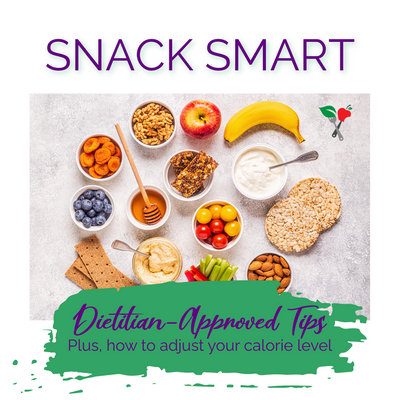The calendar says that spring is officially here and for many of us, that means getting exciting about the season’s bounty. Spring produce includes some of the most unique and most nutritious fruits and vegetables available. So, it’s great to learn what is available and the best ways to consume them. Here are my top 5 ways to spring clean your diet with the season’s bounty.
Asparagus
One of the first foods that signal the start of spring is the appearance of fresh asparagus at local farmers’ markets and grocery stores. Asparagus is a very good source of fiber, folate, vitamins A, C, E and K, as well as chromium, a trace mineral that enhances the ability of insulin to transport glucose from the bloodstream into cells. It’s also a good source of glutathione, a detoxifying compound that helps break down carcinogens and other harmful compounds like free radicals. Roasting asparagus is one of the best ways to enjoy the unique flavor. Add a couple tablespoons of EVOO, a pinch of salt and pepper to bunch, mix, and roast in 425-degree oven for 12 to 15 minutes. Add garlic and lemon juice, if you please and voila, you have a tasty side dish for your next dinner or addition to a crisp salad -- perfect with other colorful vegetables!
Artichokes
Artichokes are one of the healthiest foods we can eat, yet they get so little attention. Artichokes can help lower blood sugar and blood pressure levels, prevent inflammation and protect heart health and reduce "bad" cholesterol levels. Don’t let its complex look intimidate you -- it’s rather easy to eat an artichoke. Start by pulling off a petal from the cooked inside part of the artichoke. Then pull off the soft and delicious flesh with your clenched teeth. Once you consume all of the petals, remove the fuzzy layer that’s covering the heart of the artichoke. Then eat the heart, which most of us find to be the tastiest part. The most complementary seasonings for an artichoke are olive oil, lemon, parsley, salt and pepper. They are also a wonderful pairing with pastas and sauces too.
Watercress
Watercress is a dark, leafy green grown in natural spring water. It is rich in fiber, anti-oxidants, vitamin C, beta-carotene, folate, potassium, calcium, phosphorous and iron, and is a good source of iodine as well. In fact, it has more calcium than milk and more iron than spinach. Watercress is by far, one of spring’s most nutritious foods you can eat. And it makes a great addition to any smoothie! It is a bitter green, so it’s best to pair with sweet fruits like mango, berries or bananas and is also great to add to a smoothie with yogurt.
Rhubarb
Rhubarb is another one of spring’s superfoods. The tart, celery-like stalks are full of fiber, vitamin C and calcium—but low in calories. It is also packed with other minerals, vitamins and organic compounds that make it ideal for keeping our bodies healthy. Some of these precious components are protein, vitamin K, B complex vitamins, calcium, potassium, manganese and magnesium. And because rhubarb is naturally tart, it tastes best paired with something sweet (like fruit such as strawberries), therefore also making it a perfect smoothie ingredient.
Carrots
Carrots are jam-packed with carotenoids, which may protect against cancer, keep plaque from building up on your arteries and strengthen mucous membranes to keep harmful germs out of your body. Some carotenoids help protect your vision, too, warding off macular degeneration. Carrots are naturally sweet and pair well with both mild and strong flavors. Spices that go well carrots include basil, cinnamon, coriander, cumin, curry, dill, fennel, garlic, ginger, mace, nutmeg, paprika, parsley, rosemary, sage and thyme.
Take advantage of the many health benefits of fresh, spring produce by roasting some root vegetables or whipping up a seasonal smoothie. Enjoy the wonderful flavors, as well as the many health benefits.
Looking for more tips on how to be a healthier 'you' this spring? Be sure to check out the Seattle Sutton blog! Find healthy living tips from our expert registered dietitian nutritionist, Rene Ficek.
Start Your Healthy Journey Today!
Order NowFind More By Category








 Weight Loss
Weight Loss Health & Wellness
Health & Wellness Diabetes
Diabetes Heart Health
Heart Health Motherhood & Family
Motherhood & Family Dietary Restriction
Dietary Restriction Other Health Conditions
Other Health Conditions About SSHE
About SSHE


